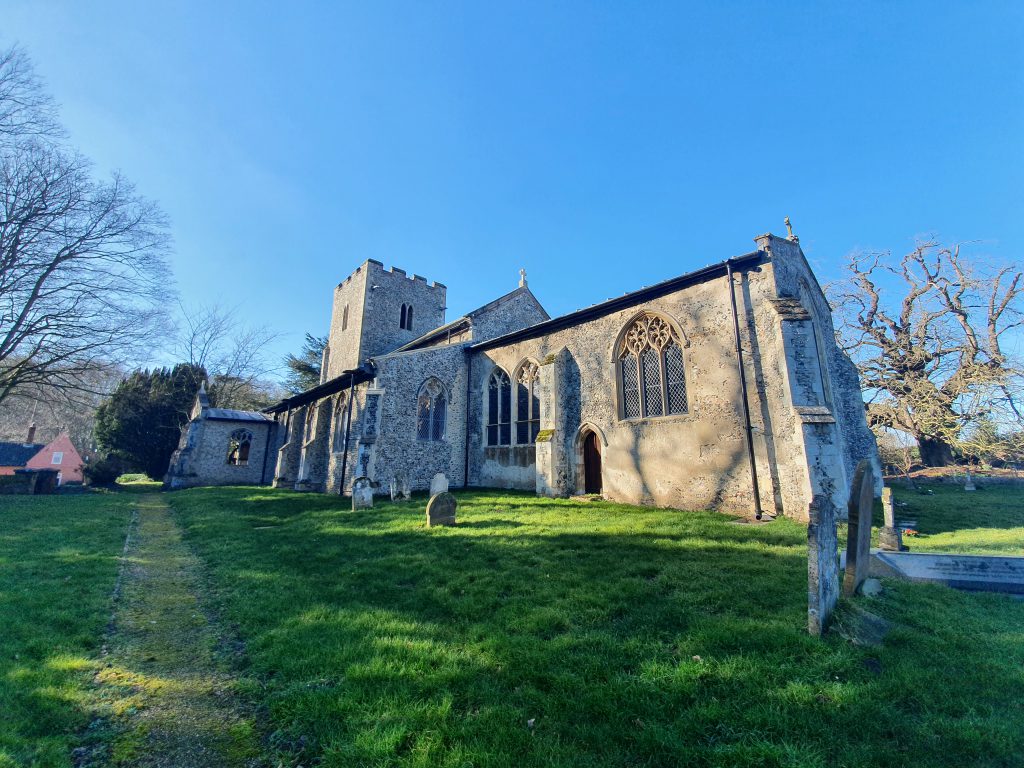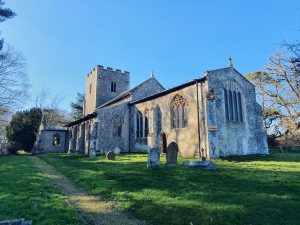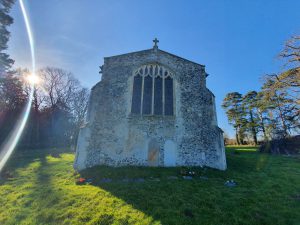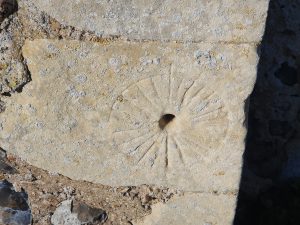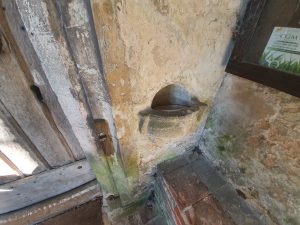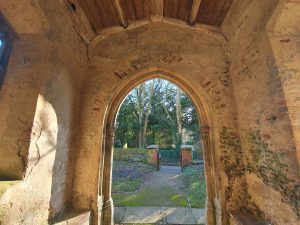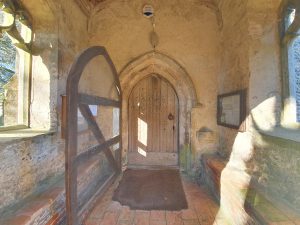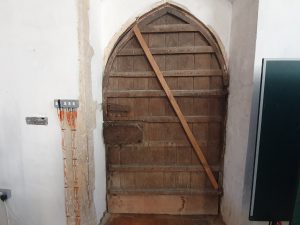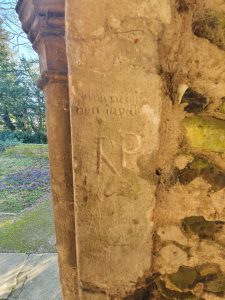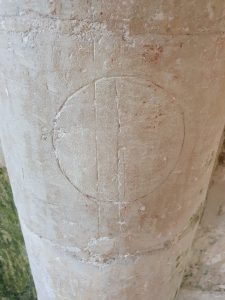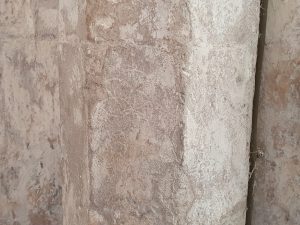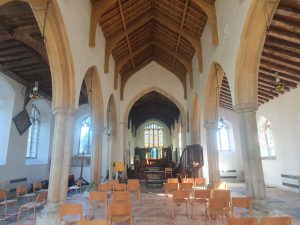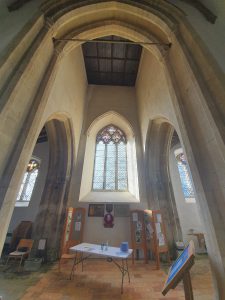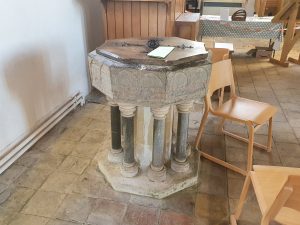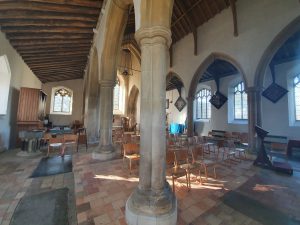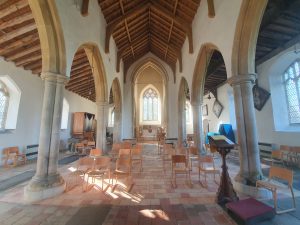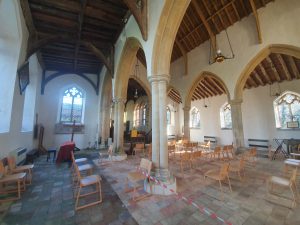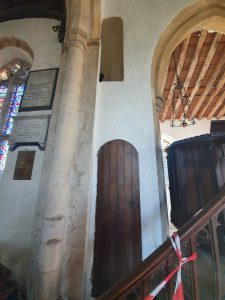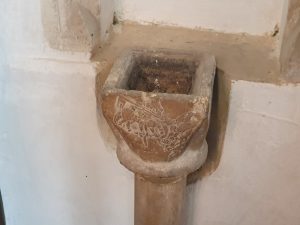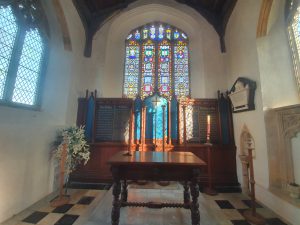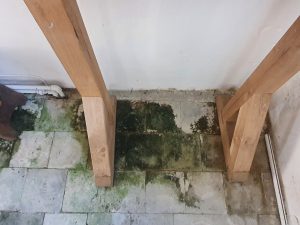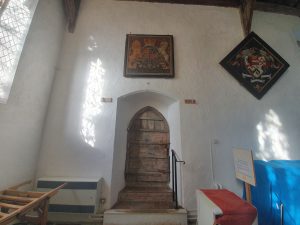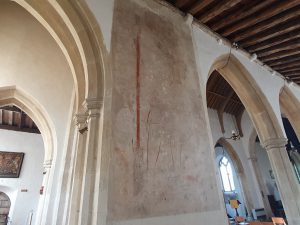Swannington – St. Margaret’s Church
The current church in Swannington primarily dates to the thirteenth century, although it’s known that there was an older building on the site before this. It’s location is deliberate, placed on the highest point in the village, but it’s not clear whether the earlier building was late Saxon or early Norman.
The chancel end of the church, with a couple of tombstones built into the wall.
The scratch dial, once used to tell the time for services in the church. The top half is decorative and doesn’t perform any known function.
The holy water stoup in the church’s porch, which likely all dates from 1457.
This feels like a proper medieval porchway and it’s full of character, or at least as much as a porch can be.
The medieval doorway.
The inside of the doorway which leads into the porch.
I’m not particularly knowledgeable about medieval graffiti in churches so it was fortunate that there was a printed guide inside the building to make visitors aware of where it was located. This was inside the entrance to the porch.
And some medieval graffiti carved into the stone inside the church.
Looking down the church along the nave and into the chancel.
There’s no separate tower within the church, it has been incorporated into the nave. There are three bells in the tower, one from 1621 and the other two are from 1674.
The church’s font which is from the thirteenth century, although the marble leg bits are Victorian. It’s conceivable that this pre-dates the current church, but, either way, this has been used in the Christening of tens of generations. When this font was first used the language used would have been Middle English, which would be hard for someone from today to understand. So, this font has been here for so long that the entire language of a nation has changed around it, whilst it has continued to be used. I feel I’m verging into the realms of being rather too loquacious now, so enough about how old the font it.
The south aisle is visible on the left of the above photo. This would have once been a busy church, or at least relatively busy, with pilgrims as Swannington was on the route of the Norwich to Walsingham pilgrimage trail.
The removal of the pews from the church is recent and deliberate, it returns the interior to more as it would have looked during the medieval period.
I was never quite sure about whether Victorian pews should be taken out and sold off, but the more I see of church interiors like this, the more that I like them. It’s open, it’s easier to hold events and it makes the church look more welcoming.
The old entrance to the rood stairs, removed after the Reformation.
This is a Norman piscina which was discovered in the church during the First World War, although there are numerous questions about this, as it’s unlikely to actually be from here as it’s perched in front of a later piscina from the fourteenth century. Anyway, this older one shows St. George slaying the dragon.
The chancel, and the church originally had three, as there were smaller set-ups at the end of the two aisles as well.
There are some areas of the church which need a little work, as is evident from this damp area.
The north doorway, with the Royal Arms of George III above the door. This is now the entrance to an extension added in the 1970s which provides some kitchen and toilet facilities.
The church is rightly rather proud of this, an old wall painting of St. Christopher which dates to the medieval period. Although more commonly known today as the patron saint of travellers, he was once revered for the security and protection that he could offer to everyone, so his image was often painted in churches. The wall painting was rediscovered in the 1840s and there are currently fundraising efforts to protect this so that it can survive into the future. In some ways, it might have been better if it hadn’t been discovered in the early Victorian period, as their attempts to protect it have perhaps not been ideal against modern standards.
As an aside, I’ve contacted Historic England to correct the spelling mistake in the listing of this church as their spelling of Margaret is incorrect. I bet they’ll be thrilled (although, to be fair, they do ask people to contact them if they spot things like this…..).

